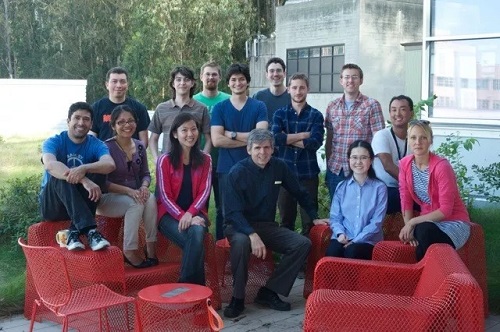Release date: 2018-03-08 In the past more than half a century, a major debate in the field of neuroscience has been whether human brains can be renewed for life. And a study published online today in Nature is almost a sad rest for the debate - the researchers found that neurons in the human hippocampus stopped growing in childhood. Those who expect the brain to constantly update and stay young, I am afraid to be disappointed. In fact, in the early days of neuroscience research, people thought that the brain stopped the manufacture of new neurons before birth. However, in the 1960s, scientists from MIT found that adult mice could still form new neurons, breaking the dogma of neuroscience in one fell swoop; in the 1980s, the team of Professor Fernando Nottebohm of Rockefeller University further discovered that some songbirds had brains. New neurons are also produced in adulthood and are used for life. These findings have aroused people's interest - when the human brain is in adulthood, will neurons be replaced? Despite a lot of research, there has been no clear conclusion about this. Professor Arturo Alvarez-Buylla from the University of California, San Francisco (UCSF) wanted to answer this question. Interestingly, he was a Ph.D. student at Professor Nottebohm, helping to clarify the neonatal mechanisms of the adult songbird brain. In the past 30 years, he has also made a lot of contributions in the field of neuronal renewal of adult animals. Nowadays, he is already a top neuroscientist, but he has questioned the ability of adult neurons to regenerate. ▲ Professor Arturo Alvarez-Buylla team (Source: Prof. Arturo Alvarez-Buylla Laboratory) With the assistance of the collaborators, Professor Alvarez-Buylla team obtained a sample of 59 human hippocampus. The hippocampus is vital to human memory and learning, and is one of the key areas for researchers looking for newborn neurons. In the study, scientists first analyzed the number of neural stem cells, neural progenitors, newborn neurons, and mature neurons in these hippocampal samples using antibodies labeled with different cell types. To ensure accuracy, the researchers also used high-resolution electron microscopy to confirm the shape and structure of these cells. Based on the number of these cells, we can infer the neonatal status of the brain in different ages. The results of the study were surprising – in the brain samples of newborns, the average number of new neurons per square millimeter was 1,618. But shortly after birth, this number showed a cliff-like decline. Samples from 1 year old infants show that the density of new neurons has dropped fivefold! The 7-year-old child's neuron density was 23 times lower than that of the 1-year-old baby. By the early adolescence, this number had dropped from 1618 to 2.4. In the 17 adult samples, the researchers did not find any signs of new neurons. ▲From birth to adulthood, the density of new neurons has fallen all the way (Source: Nature) “In young children, we can see that a large number of new neurons continue to be produced and integrated into the dentate gyrus of the hippocampus. But in early adolescence, neuroneogenesis completely disappears,†said Mercedes F, co-first author of the study. Dr. Paredes said: "The fact that new neurons in newborns are clearly visible and adults have no obvious new neurons makes us believe in our observations." The researchers also cautioned that no new neurons were observed and that it was not possible to produce new neurons in the adult hippocampus. "If there are neurons in the adult hippocampus, it is also a very rare phenomenon." Professor Alvarez-Buylla rigorously commented. “Maybe we should take a step back and ask what we found,†said Dr. Shawn F. Sorrells, another co-first author of the study. “If the newborn of the neuron is so rare that we can’t detect it, then it’s Can you play a more important role in brain plasticity or in the learning and memory functions of the hippocampus?" This study may explain why our learning and memory will continue to decline as we age. Previously, we have reported the devastating effects of susceptibility on brain cells. After seeing this study, we should be aware of the cruelty of "every youth is gone forever." For the sake of our brain cells, it is better to develop a habit of not staying up late. Reference materials: [1] Human hippocampal neurogenesis drops sharply in children to undetectable levels in adults [2] Birth of new neurons in the human hippocampus ends in childhood Source: Academic Jingwei
One-button flash tester, also known as One-button fast measuring instrument and One-button fast image measuring instrument, is widely used in the measurement and detection of die-cutting products, mobile phone cover plate, mobile phone glass, PCB, spring, screw, precision hardware, machined parts and other products. Once used, the one-button flash tester does not need a fixture, and the product can be placed arbitrarily. The full-size measurement of the product can be completed with one button, with high efficiency, high accuracy and simple operation.
Fast Measuring Instrument,Fast Image Measuring Instrument ,One Button Measuring Instrument,One-Key Precision Detector Zhejiang dexun instrument technology co., ltd , https://www.dexunmeasuring.com
